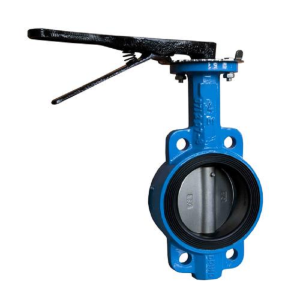目录
ToggleButterfly valves offer several key advantages:
- Small Volume and Light Weight: Compared to other valve types like gate valves or ball valves, butterfly valves are more compact and lighter. This makes them easier to install and maintain and reduces the load on the pipeline system.
- Quick Opening and Closing: Butterfly valves can be quickly opened and closed by rotating the valve disc. They are easy to operate and have a lower operating torque compared to gate valves or globe valves.
- Low Fluid Resistance: With a straight-through flow path, butterfly valves create minimal resistance to fluid flow when fully opened. This helps reduce pressure loss and energy consumption.
- Suitable for Large Diameters: Butterfly valves are well-suited for large-diameter pipeline systems due to their simple structure and relatively low manufacturing cost.
- Good Corrosion Resistance: Depending on the working conditions, butterfly valves can be made from suitable materials like stainless steel, copper alloys, and rubber to enhance their corrosion resistance.
- Small Opening and Closing Torque: The butterfly plates on either side of the rotating shaft are subjected to approximately equal forces from the medium, resulting in a small net torque required for opening and closing.
- Good Low-Pressure Sealing Performance: The sealing surfaces are often made of rubber and plastic, providing good sealing performance at low pressures. However, the operating pressure and temperature range are limited by the material of the sealing ring. Hard-sealed butterfly valves, however, have improved these limitations.

Butterfly valves also have some drawbacks:
- Limited Sealing Performance: At high temperatures, high pressures, or severe conditions, the sealing performance of butterfly valves may not meet the requirements compared to other valve types like ball valves or gate valves.
- Not Suitable for Media with Fine Particles: The gap between the valve seat and valve disc is relatively large, which can cause leakage or blockage if the medium contains fine particles.
- Lower Control Accuracy: The adjustment accuracy of butterfly valves is relatively low, making them less suitable for systems that require precise control of flow or pressure.
- Limited High-Temperature Application: The sealing ring or sealing surface is often made of elastic materials, limiting the use of butterfly valves in high-temperature environments.
- More Installation Space: When fully opened, the valve disc occupies more space, potentially requiring additional installation space.
Summary
Butterfly valves are economical and practical for general industrial applications. They excel in applications requiring quick operation, low fluid resistance, and large diameters. However, for specific working conditions, it’s important to carefully evaluate the suitability of butterfly valves to ensure they meet the system’s requirements.
0